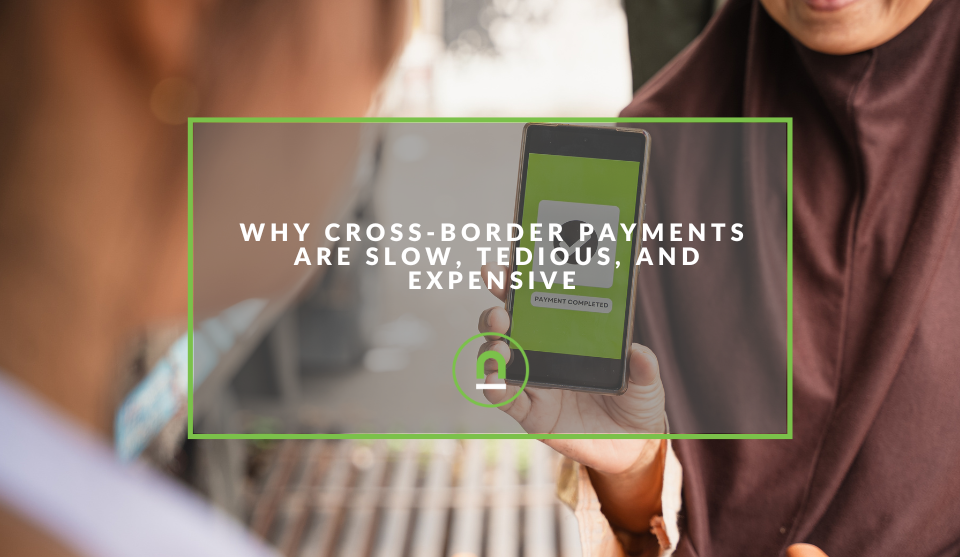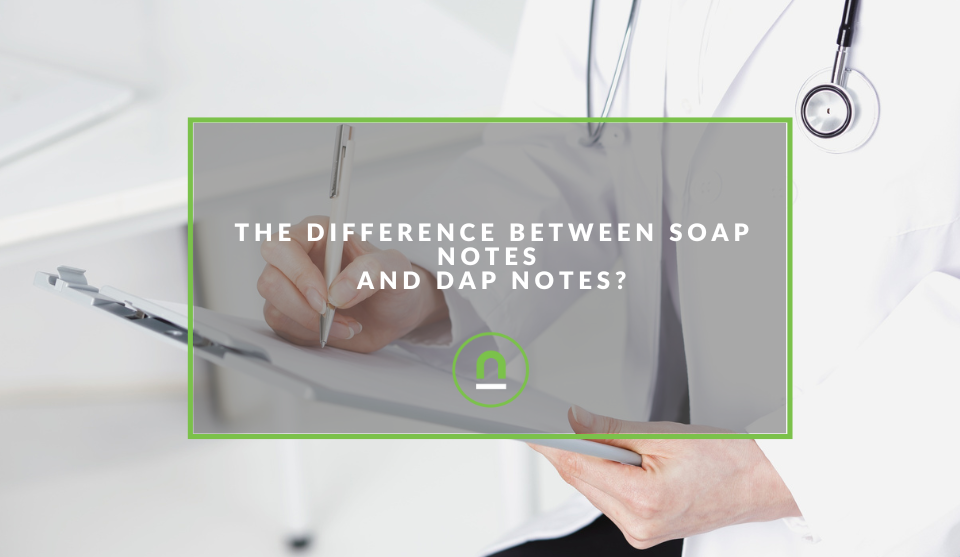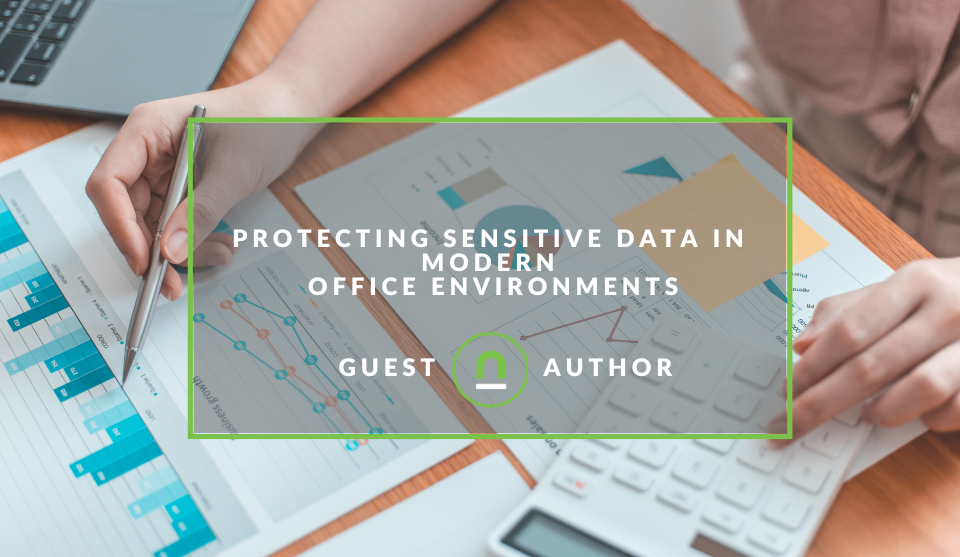Recent posts

Money Talks
Why Cross-Border Payments Are Slow, Tedious, and Expensive
17 December 2025

Money Talks
The Rise Of Trading Platforms In South Africa
16 December 2025

nichemarket Advice
The South African VAT Threshold Chokehold
05 December 2025

Doctors Orders
The Difference Between SOAP Notes and DAP Notes
02 December 2025
Popular posts
Extravaganza
Trending Music Hashtags To Get Your Posts Noticed
24 August 2018
Geek Chic
How To Fix iPhone/iPad Only Charging In Certain Positions
05 July 2020
Extravaganza
Trending Wedding Hashtags To Get Your Posts Noticed
18 September 2018
Money Talks
How To Find Coupons & Vouchers Online In South Africa
28 March 2019
Protecting Sensitive Data In Office Environments
21 November 2023 | 0 comments | Posted by Luke Fitzpatrick in Alarming
The modern era of remote work and cloud computing has intensified the challenge of securing sensitive data. In this environment, businesses must ensure they are protected against data breaches. With the ever-evolving nature of cyber threats and the more transient nature of the modern workforce, the relevance of data security has never been more critical.
Due to the ever-increasing significance of data security, businesses should consider these best practices to keep data safe in modern office environments.
The importance of data security
Data, once an afterthought, is now a critical business asset driving decisions, innovations, and business development.
However, this value also makes it a prime target for cybercriminals. They are equally aware of how valuable data is, and when compared to “physical targets,” targeting data is more accessible and carries less personal risk.
In short, there are plenty of compelling reasons why data should be protected in modern office environments, including:
- Business operations: Data forms the backbone of most modern businesses. From customer information to financial records, data is integral to daily operations. A breach can disrupt these operations, leading to significant downtime and financial loss.
- Reputation and trust: Trust is a hard-earned commodity. Data breaches can erode this trust in an instant. Customers and partners expect their data to be handled with care. For instance, a breach that targets your CRM software can tarnish a company's reputation, making it challenging to regain trust and potentially leading to loss of business.
- Financial implications: Beyond the immediate costs of addressing a breach, there are long-term financial implications. These can include legal fees, fines, and compensation to affected parties.
- Regulatory compliance: Many industries are bound by regulations that mandate specific data protection measures. Non-compliance can result in hefty fines and legal actions.
The ramifications of a data breach have the potential to devastate a business. There can be no more compelling reason to protect data than that!
The nature and evolution of data security threats
In some senses, the protection of physical assets is easy. A lock and key are often all that is needed. Data security is a different beast altogether, and data is to be found flying around the airwaves; it can be on your office server and a coffee shop in a different part of the world simultaneously.
This transience is part of the dramatic transformation in the recent “data landscape”. This means that keeping data safely wrapped in cotton wool protected by layers of firewalls and software is no longer an option.
A historical perspective on data security
Data has always been important to a business, but the rise of the internet and the power of “big data” has transformed its importance. For a simplified historical perspective, we can break the importance of data security into three distinct ages:
- Early threats: In the early stages of the internet, threats were relatively simple, often limited to viruses and worms. These were primarily designed for mischief rather than malicious intent.
- Rise of financial motives: As online transactions grew, cybercriminals recognised the potential for financial gain. This led to the emergence of threats like Trojans and spyware aimed at stealing personal and financial information.
- Advanced persistent threats (APTs): Sophisticated attacks, often state-sponsored, targeting specific organisations or nations. These threats are persistent, aiming to steal data over extended periods.
Current prevalent threats
The connectivity of the modern age has revolutionised how we work. The modern office is geared to take advantage of this paradigm shift. But the same circumstances have given rise to a new and sophisticated range of ever-evolving threats:
- Phishing (and smishing): Cybercriminals impersonate legitimate entities to deceive individuals into providing sensitive information. Phishing scam variations include spear-phishing (targeted attacks) and whaling (targeting high-profile individuals).
- Ransomware: Malicious software that encrypts a user's data, demanding a ransom for its release. Its disruptive potential has been showcased in recent high-profile attacks.
- Insider threats: Threats aren't always external. Disgruntled employees or those with malicious intent can pose significant risks due to their access to internal systems.
- Networks: Workers connecting from unsecured networks, unencrypted files, and unsecured devices are all prevalent dangers.
The remote work paradigm and its implications
We touched on this in the previous section, but the implications of such a switch are far-reaching regarding data security. Among the unique challenges that have accompanied this switch are:
- Increased attack surface: Employees working from various locations, often on personal devices, have expanded potential entry points for cybercriminals.
- VPN vulnerabilities: VPNs can be exploited while providing secure connections if not properly configured or updated.
- Phishing and social engineering: The uncertainty and changes in communication patterns due to remote work have led to a surge in phishing attacks.
Understanding these threats is the first step in creating a defence strategy to keep data safe in modern offices and businesses. The next section discusses some of the best practices to help businesses achieve that.
What are the best practices for data protection?
The above might sound like scaremongering, but the news feeds are full of tales of companies – large and small – that have suffered the devastating consequences of a data breach.
Unfortunately, no magic bullet or a single best practice guarantees immunity from becoming the next high-profile victim. Instead, safeguarding data requires a multifaceted, holistic approach encompassing robust software defences, vigilant staff training, strict legislative compliance, proactive monitoring, and physical security measures.
The following describes some best practices to keep data safe in modern office environments.
Data governance
Data governance is the foundation for your entire data strategy, including security. It represents more than just data management, though.
Good data governance is about ensuring the integrity and security of your data. But, and this is where the tricky part is, it must do this while making sure it is available to the right people at the right time. Among the best practices to consider here are:
- Establishing a clear framework: Every business should have a clear data access, usage, and storage framework. This ensures that data is used correctly and is accessible only to those who need it.
- Comprehensive data catalogue: A well-maintained data catalogue aids in understanding where data resides, its purpose, and how it's interconnected.
- Backup and recovery strategy: A robust backup and recovery plan is essential. It ensures business continuity even in the face of unexpected data loss.
How to protect your data?
Gone are the days of a simple virus checker on each PC being enough to protect your office data. The nature of the threats has evolved dramatically, and this evolution continues unabated.
- Modern data protection is a blend of strategy and technology. Among the key features that all robust security solutions incorporate are:
- Advanced software solutions: Leveraging state-of-the-art software solutions tailored for data security can thwart the most common threats.
- Encryption and key management: Encrypting sensitive data and managing encryption keys effectively ensures that it remains unintelligible even if data is accessed.
- AI and computer vision: The next frontier in cybersecurity. These technologies can predict and counter threats before they materialise. This is important as these technologies are beginning to erode cyber security’s reliance on blacklists to identify threats like phishing.
Physical security
In the digital age, it is easy to overlook the importance of physical security. However, physical security is critical to an all-encompassing data security solution.
The premise of why this is important is simple – all the digital safeguards in the world are not going to protect your data if someone can just wander in from the street and help themselves.
This happens more often than most people believe. According to one UK Insurer, the figure could be as high as 10%, while a report on Statista pinned the figure at 4%. Either way, this represents a substantial risk.
Here are some of the modern physical security solutions that can help protect data in office environments:
- Restrict access: Implementing biometric systems, access cards, and surveillance ensures that only authorised personnel can access sensitive areas.
- Surveillance and alarm systems: Modern company security systems have advanced features that detect and deter intruders in real-time.
- Data storage security: Ensuring that physical storage devices, like hard drives and servers, are stored securely and are inaccessible to unauthorised individuals.
- Employee training: Training staff to recognise and report suspicious activities or individuals can act as a first line of defence against physical breaches.
This is often overlooked when considering data security, but implementing robust physical security systems can swiftly neutralise between 4% and 10% of the risk.
Data security and compliance
Protecting your data is often more than just a good practice. It is a legal obligation. Here are some best practices to ensure data protection fully complies with all relevant legislation.
- Stay informed: Regularly review and stay updated on industry-specific regulations and global data protection laws.
- Implement compliance tools: Use software and tools designed to help businesses monitor and maintain compliance.
- Regular audits: Conduct periodic internal and external audits to ensure all data handling practices align with regulations.
- Documentation: Maintain detailed records of data processing activities, consent forms, and data breach incidents to demonstrate compliance when required.
Compliance is an area of data security that ensures organisations remain on the right side of the law.
Detection and response
The longer a threat goes undetected, the greater the damage can be done. Incorporating a clear strategy with a proactive detection approach and a clear roadmap of how to respond is critical:
- Monitoring: Continuous surveillance of systems can detect anomalies or breaches.
- User behaviour analytics: Understanding typical user behaviours can help identify suspicious activities.
- Rapid response: Swift action post-detection can mitigate potential damages.
How you respond to an incident and how quickly it is detected play critical roles in ensuring data is protected in modern office environments.
Staff training
Ultimately, a successful cyber attack will target what is considered a weak link – the end user. The person sitting at the keyboard will decide whether or not to open the email that arrived with dozens of others that morning.
Some of the training practices that can help staff include:
- Continuous learning: Regular training sessions ensure employees are updated on the latest threats and best practices.
- Simulated attacks: Conducting mock phishing or ransomware attacks can test and reinforce employee vigilance.
- Reporting mechanisms: Encourage a culture where staff promptly report suspicious activities, ensuring quicker response times.
The staff are a vital asset in the fight against cyberattacks, and proper training can make them a critical last line of defence.
Don’t forget software updates.
Ensuring all the software used in the office environment is updated is essential to any robust cybersecurity solution. Perhaps the most obvious is anti-virus solutions, but criminals will exploit software vulnerabilities.
Here are some of the best practices to help achieve this:
- Patch management: Regularly update software and systems to patch known vulnerabilities.
- Version control: Ensure that all software, especially security software, runs the latest version to benefit from recent enhancements.
- Scheduled maintenance: Set periodic checks to ensure all systems are updated, reducing potential points of entry for cybercriminals.
It is easy to dismiss updates as inconvenient, but they protect data.
The future of data security
Predicting the future of technology is always challenging. However, there are distinct patterns and trends that we can use to make educated guesses as to what the future holds:
- Quantum computing: A potential disruptor to current encryption standards, requiring new cryptographic solutions.
- Blockchain: Offers decentralised security structures, making data tampering more difficult.
- AI-driven security: The disruptiveness of this technology is apparent in the AI Job market. AI is permeating many aspects of our lives- including security. Expect advanced analytics and real-time threat detection using artificial intelligence to strengthen defences.
- IoT integration: As workplaces adopt more IoT devices, new security protocols will be essential to guard against vulnerabilities.
Whatever the future holds, by adhering to best security practices, businesses can minimise the risk of data breaches. There is no doubt that the way we work today has many advantages. Research from Checkr on the state of the office shows that the modern workforce is flexible, remote, and can work from anywhere on any device.
While this all sounds great in practice, for it to succeed, we must keep focused on protecting that most valuable of assets: data. Data protection isn’t an afterthought but an integral part of any organisation's working practices.
Tell us your story.
Would you like to write for nichemarket just like Luke has? Find out how to submit a guest post, and when you're ready, you can contact us.
Are you looking to promote your business?
Retail businesses can create their free business listing on nichemarket. The more information you provide about your business, the easier it will be for your customers to find you online.
Registering with nichemarket is easy; all you will need to do is head over to our sign-up form and follow the instructions. If you require a more detailed guide on how to create your profile or your listing, then we highly recommend you check out the following articles.
Recommended reading
If you enjoyed this post and have time to spare, why not check out these related posts and dive deeper down the rabbit hole that is artificial intelligence?
You might also like
The Rise Of Trading Platforms In South Africa
16 December 2025
Posted by Gabriela Pelayes in Money Talks
Discover how the rise of digital trading platforms in South Africa is reshaping commodity markets, boosting accessibility, efficiency, and the future...
Read moreThe South African VAT Threshold Chokehold
05 December 2025
Posted by Che Kohler in nichemarket Advice
How South Africa's R1 Million Limit Keeps Small Businesses From Developing, And Why Even Adjusting For Inflation Alone Would Free Up Burdens On Small...
Read more{{comment.sUserName}}
{{comment.iDayLastEdit}} day ago
{{comment.iDayLastEdit}} days ago
 {{blogcategory.sCategoryName}}
{{blogcategory.sCategoryName}}
